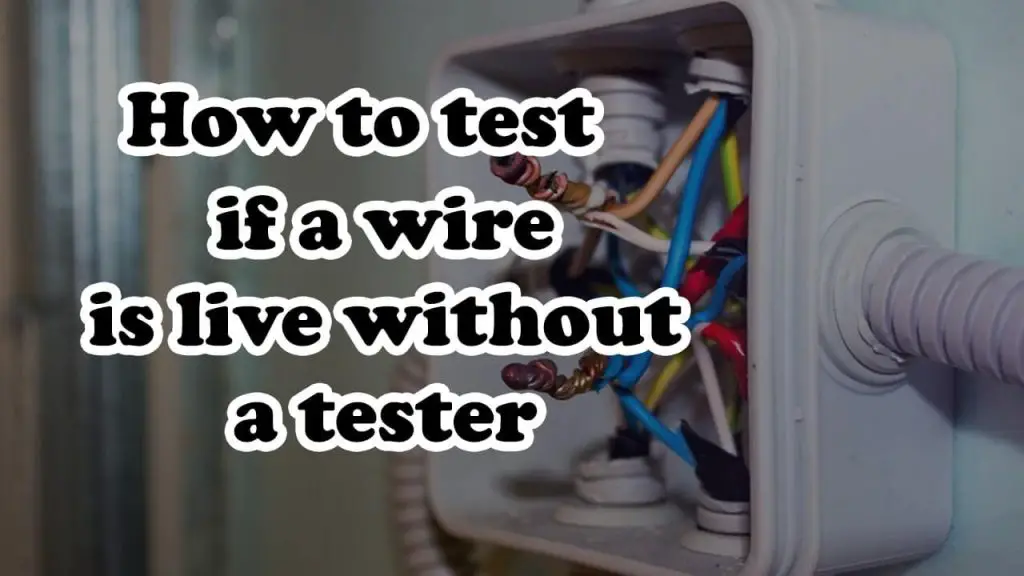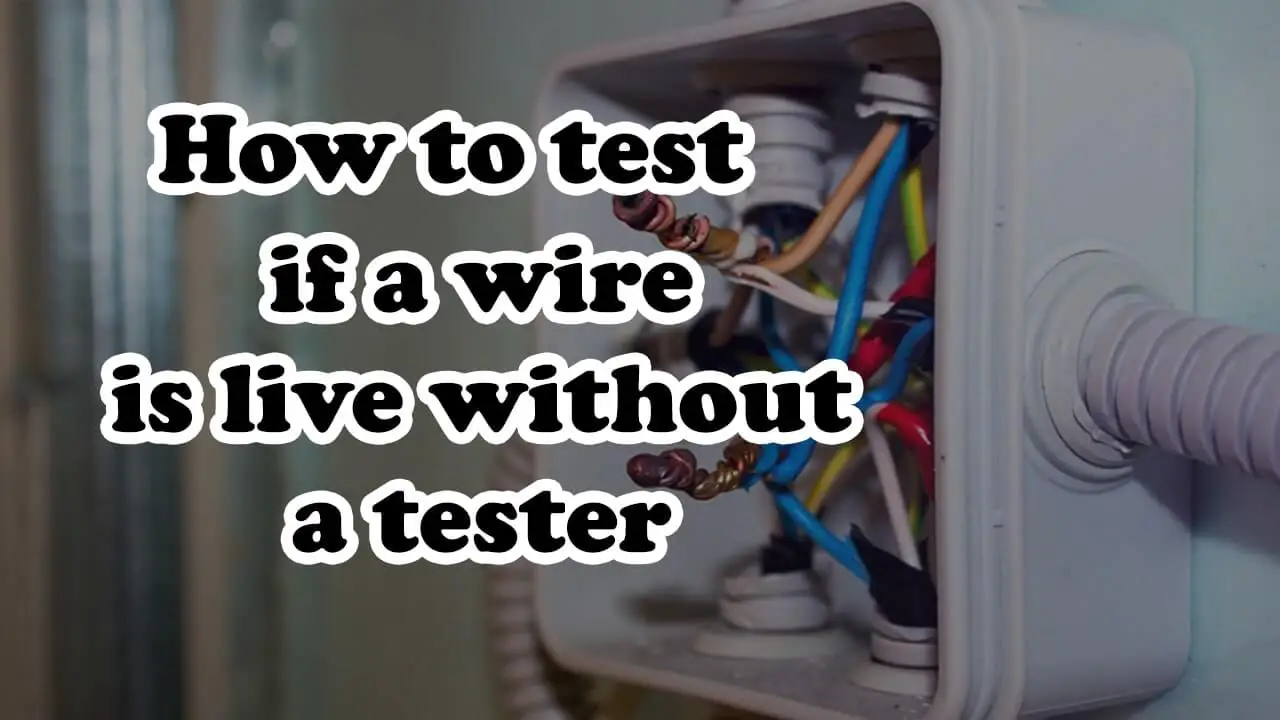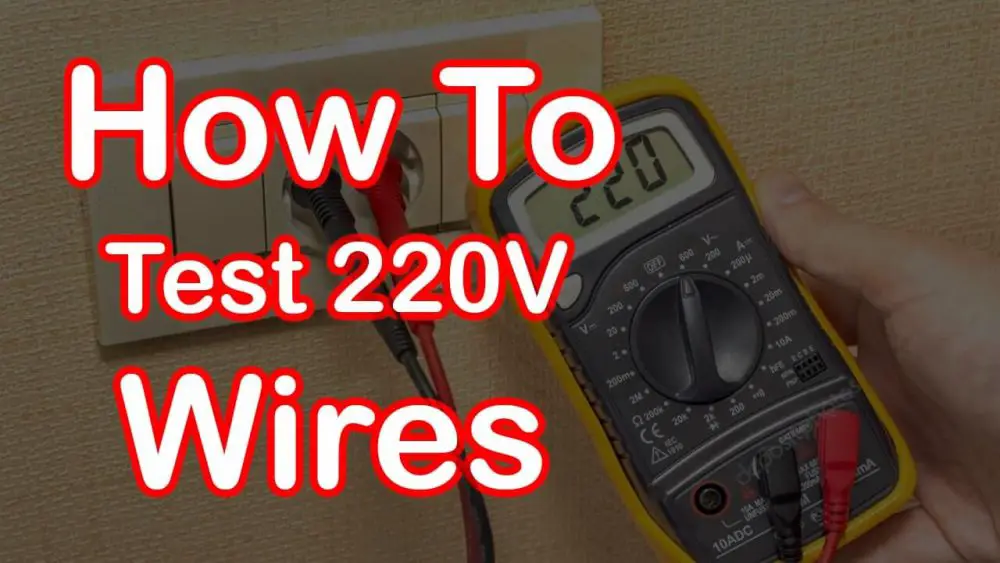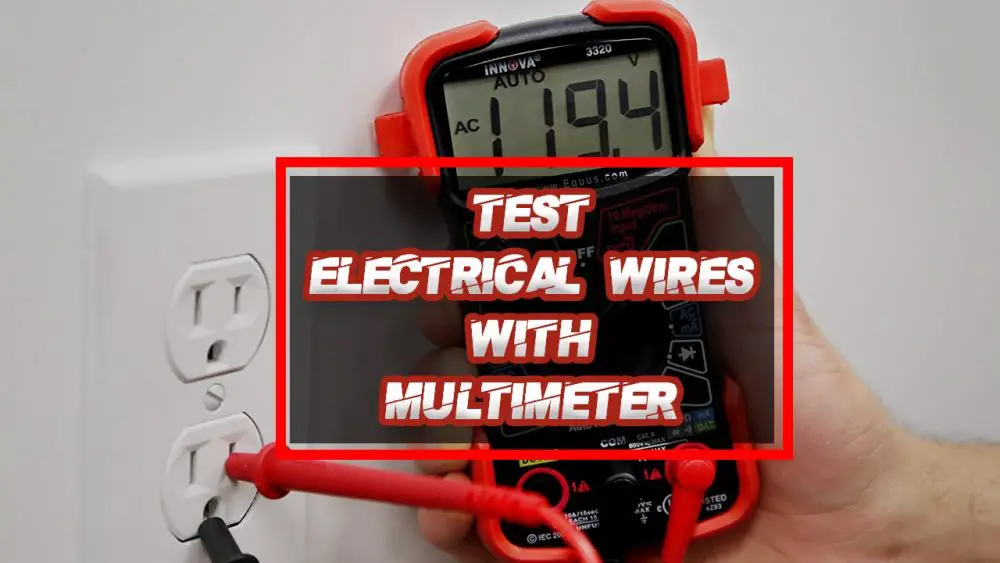How to test if a wire is live without a tester
It is not an easy task for people to do work that deals with electrical wires or cables. So when you do any project, you need to be more cautious. If not, that may lead you to shock risks mainly; it occurs when the wiring is done with confusion or when two junctions are wrongly connected, resulting in poor wiring. However, you need to be more careful while starting any electric work because you never knew how the wiring was done previously? So it is a precaution to switch off the power connection before you start the work.
Check Live Wires without a Tester:
- Build your tester. For example, get a light bulb and socket, and attach a couple of wires to it. Then touch one to neutral or ground and one to the wire-under test.
- If the lamp lights, it is alive.
- If the lamp doesn’t light, then test the lamp on a known live wire (like a wall socket) to make sure it lights.
- Do not do these things while touching any metal yourself! Instead, wear glasses/goggles and, if at all possible, keep one hand in your pocket.
- Warning! Never touch any electrical-related device with the front of your hand. Always brush it with the back of your hand first. If it should be live and you touch it, your muscles will contract. If you connect with the front of your hand, you may grab on, and you would not be able to let it go. If you touch the back of your hand, you will jerk away from the contact.
- Second warning! Cover any switches or breakers that you turn off to de-energize a circuit while working on it with masking tape or some such to warn other people not to turn them on again, and this is a poor man’s lockout, but safer than nothing.
- Doing so ensures your safety. If not, it may lead to several risks simultaneously. Before switching off the power connection, you need to check which wire you need to work on?

You need to follow the below steps, which will help you check if a wire is live without a tester. They are:
Step: 1
Know the standards – should do all wiring based on the colour-coding standards similarly, the home wire has also been done based on primary colour standards. You can find wires arranged inside the home electric box as per colour coding standards. So while repairing or attempting to fix the fault, you should never try to change the wiring standard. In residential wiring, black coloured wire is in consideration as a live wire; it needs to be attached to the brass terminal. This connection may change for residential wiring for a flat system.
Step: 2
Check the life of electric cables– to check whether the wires are live or not, you need to remove the box’s cover. You can use a screwdriver to remove the cover, but you need to be more careful. Because if you touch any wire, the connectivity gets on this may result in you with the current passage. You need not remove the wire or connect them to check the conductivity or life of the wire.
Step: 3
Use a tester or meter to measure the conductivity rate- after removing the cover, you can use a wire tester or voltmeter to calculate the passing voltage rate. At the same time, you need to remember that more wires can have conductivity. You can simply check if a wire is alive without a tester and voltmeter by connecting each wire and checking which one makes light glow and makes the meter machine beep.
Manual testing of the live wire without having the metering device
For testing the live wire without having the metering device, you can build your tester. For example, get a socket and light bulb, attach a couple of wires to it, and then touch one to the ground or neutral and another wire to the test. If the lamp lights, it is alive; else, test the lamp on the live wire like a wall socket to make sure that it lights.
By following this simple strategy, you can check the test if the wire is live, and before doing this, make sure that you wear goggles/glasses and, if at all possible, keep one hand in your pocket.
Testing a live wire in the switch
Another situation where you might need to test for a live wire is in the switches. In this case, you need to unscrew the buttons so you can access the terminal.
Touch one of the tests leads to the ground terminal and the other to the live wire. When you observe the reading, it should be near or about 230V.
Testing a live wire in the socket
Note: If you use a receptacle tester, you can also test for voltage before proceeding. It is simple to use and is comparatively affordable too. Check out the receptacle tester from Klein tools, a good name in the market.
- Testing the wires inside the socket is relatively easy and safe.
- Nevertheless, you should always follow the required safety methods, including wearing an insulated glove.
- The black probe goes into the jack on the left.
- The left jack is usually where the neutral wire is connected.
- Then, you can proceed to insert the red probe into the right jack on your Klein Tool receptacle tester.
- You have a live wire working with the correct voltage if you derive the register reading from about 230V to 250V.
Testing live wire behind a wall:
- In some situations, you might need to test wires behind a wall.
- The most suitable choice is to use Ultra-wideband or UWB in such circumstances.
- These radar-like tools allow you to test whether a wire is alive or not without rending down the wall.
- Ultra-wideband devices are trained quality and can be very pricey.
- Therefore, these advanced wire detectors are not user-friendly and require some level of training and knowledge.
- Consequently, you will only see professional electricians using them. On the other hand, Bosch has a good selection of Ultra-wideband in their catalogue.
- This live wire detector, in particular, is an excellent choice for efficiency, reasonable price and performance.
Testing exposed live wire with a multimeter:
- Working with exposed wires always warrants extra attention.
- So it would be best if you took note of it.
- Wearing a pair of insulated gloves is still required.
- In addition, it would be best to consider standing on an insulated or rubber mat to prevent electrical shocks.
- A pair of high-voltage safety gloves that we like. It has the correct succession of safety and price.
- Touch one test leads to any metal surface acting as the ground source.
- It can be an appliance, metal pipe, or even a screw.
- Next, hold the other test lead and touch each of the wires.
- Ideally, two out of the three wires should give a reading of zero to near zero.
- Those are your ground and neutral wires. On the other hand, the other wire should record about 230V, which is your live wire.
Tips for testing a live wire safely:
- Use clips on the test leads while working with wires. This way, you use only one hand to test the wires. We prefer using this multimeter test clip set. It comes in a wide range of colours, making it easy to identify which wires you are dealing with. Besides, the price is low.
- If you come across a wire and cannot determine it by the colour code, trace it to the user unit. If you can identify it as part of a device or an appliance, you should test it with a multimeter.
- In situations where you dig up an unexplained cable, or you find it lying around, do not try to try the wire yourself. Clear the area quickly and call a qualified electrician.
- Working with live wires is exceptionally critical. If you doubt your capability to test a wire or use a multimeter, call an electrician to take care of the job.
Table of Contents
Frequently Asked Questions
The test lamp should light when you touch a live hot wire black or usually red except green and white, with one lead and a neutral (white) or ground (green or bare copper) with the other lead. It confirms that the power is on and that you have a complete (suitable) circuit.
Brown Colour or reddish-brown is the live wire colour. Plug Wiring Colours are: Live wires are Brown. Neutral wires are Blue. Ground or Earth wires are Yellow and Green.
Conclusion:
Examining live wires can be dangerous or straightforward, depending on who and how you approach it. For a qualified electrician, it is among his most detailed works. However, without the proper knowledge and instruments, it can cause serious injury. Hiring an electrician is not uncertain among the more costly works in any household. However, it is far less expensive than maintaining an injury or something worse. And since operating with live wires needs more precaution, do not delay to secure an electrician’s services.
Related Posts:
How To Test 3 Wire Crank Sensor with Multimeter




